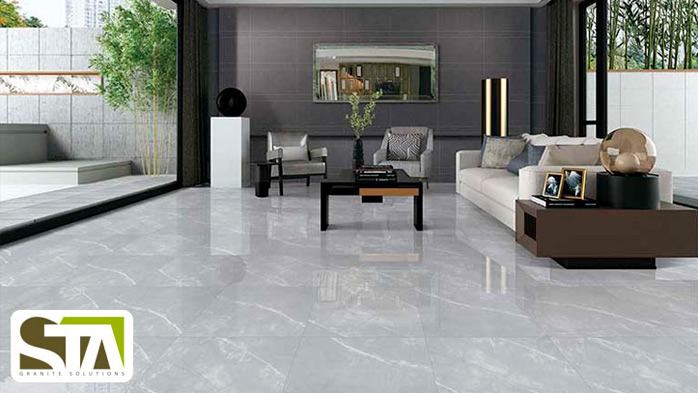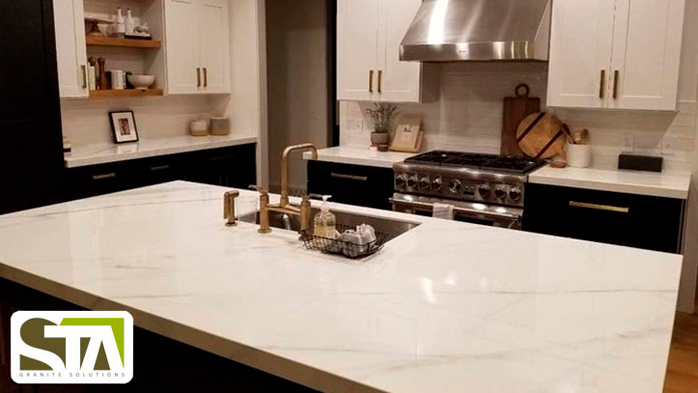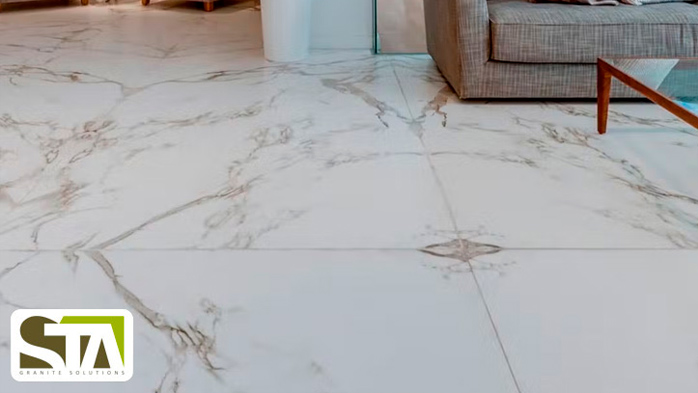Call Us
Call us to schedule an in home consultation
From: 8:30 AM to 4:30 PM- Monday to Friday
For the Fabrication Facility please call:
(737) 330-9488
Porcelain / Dekton Ceramics
Features and benefits
“One of the best things about porcelain is that it can be used everywhere,”. “It is ideal for kitchens and bathrooms with its stain, heat and water resistance. It is also perfect for outdoor applications and eliminates the worry of sun damage, as it is completely UV resistant. Large format tiles have been very popular for both kitchen and bath and our installers are happy when we specify the product.”

There are some production limitations at the moment, though. “Complex edge profiles (like ogee) are not possible in ceramics or porcelain, as they are in stone. Only eased (square) edges are possible.”
Special features
You can clad walls, cabinetry, furniture and other surfaces in porcelain slab to extend its style, durability and livability to the rest of your space. You can also create an integral sink, which many designers are doing in kitchens and bathrooms for their look and ease of use.More recently, a few manufacturers have started offering integrated induction burners into their porcelain slab countertops. These can be custom placed in the particular areas of the


Costs and challenges
“The costs of porcelain countertops are comparable to that of quartz, but typically come in slightly higher because of their fragile nature when handling and rather difficult fabricating process,”. Another cost contributor is the sometime scarcity of local skill and expertise. Not including special features, porcelain slab countertops can range from $60 to $100 per square foot. “Because porcelain countertops are still fairly new to the U.S. market, finding a fabricator that has experience with the product can prove to be difficult.
Anytime we can have a seamless, low maintenance installation for a client, it is appreciated. Gone are the days of cleaning grout with a toothbrush. You’d probably agree!
Resale Value
Having porcelain countertops can give your home increased value. Many people have equipped their houses with these types of materials to increase their value and sell them at a better price in less time, so, it's like a value-added investment.
MAGAZINE
Construction combines an elegant finished and fine materials with a faithful adaptation to the design as a result a product according to each need.
We constantly evolve in each of our projects, always facing each challenge with professionalism.

PORCELAIN FOR YOUR HOME, TILES

PORCELAIN FOR YOUR HOME, COUNTERTOPS FOR YOUR KITCHEN

DEKTON FOR YOUR HOME, FLOORS, AND PAVEMENTS
- 1
- 2
- 3
- 4
- 5
- 6
- 7
- 8
- 9
- 10
- 11
- 12
- 13
- 14
- 15
- 16
- 17
- 18
- 19
- 20
- 21
- 22
- 23
- 24
- 25
- 26
- 27
- 28
- 29
- 30
- 31
- 32
- 33
- 34






